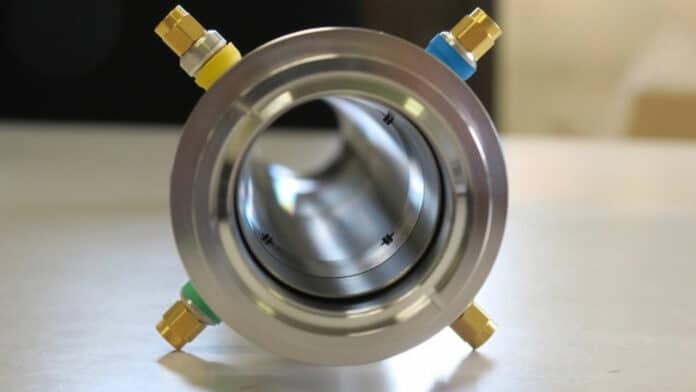The anti-particles of electrons are called positrons. They can be created by hitting a target of heavy metal, such as tungsten, with high-current, high-energy electrons. However, in addition to positrons, the target generates almost equal amounts of electrons, simultaneously caught by electric and magnetic forces in the positron capture section that follows the target.
Electrons and photons are separated by magnetic force just after the capture phase. It is challenging to detect positrons and electrons in the capturing portion simultaneously. Three factors make it difficult to see them clearly:
- A radiation-hard environment.
- A lack of room to place beam monitors.
- The need to distinguish between positrons and electrons in a short period of time.
They are generated in large quantities in the “SuperKEKB B-Factory” (SuperKEKB), where they are crushed into electrons at a brightness that sets world records. Physicists look into the mysteries of matter, antimatter imbalance, and traces of other exotic particles outside the standard model by examining the hundreds of decay patterns of B mesons and anti-B mesons in these encounters. One of the important components of this experiment is raising the positron intensity to increase the collision rate.
A team led by Prof. Tsuyoshi Suwada of KEK successfully installed a new type of beam monitor into the SuperKEKB positron source.
Suwada said, “The idea is to use a wideband beam monitor with a simple rod antenna. This idea is well-known in radio-frequency wave detection techniques. It was successfully experimented with using charged particle beams in high-energy accelerators, such as electron and positron beams, for the first time at KEK. It turns out that an electron (or positron) beam precedes a positron (or electron) beam with some time interval in the time domain in the capture section.”
“Interestingly, we found in experiments that the time interval between electrons and positrons intricately varies in the range of 20 to 280 ps on average, and their traveling order is interchanged depending on the operation condition of the capture section. At the capture phase of 0 deg, the electrons with minus signal polarity precede the positrons with plus signal polarity, and the time interval is 137 ps.”
“At the capture phase of 180 deg, the positrons with plus signal polarity precede the electrons with minus signal polarity, and the time interval is 140 ps. It turns out that the time interval between the electrons and positrons variates intricately in the time domain, and the traveling order is interchanged at the capture phases of 50 and 230 degrees.”
“Applied into the SuperKEKB, enhanced capture efficiency of positrons helped the SuperKEKB to improve its world record luminosity.”
“Useful information is about the radiation damage of the beam monitor system to be obtained at the injector linac in its longer-term operation. This new beam monitor could be applied in the next-generation B-factories and future e+ e– linear colliders.”
Journal Reference:
- Suwada, T. Direct observation of positron capture process at the positron source of the superKEKB B-factory. Sci Rep 12, 18554 (2022). DOI: 10.1038/s41598-022-22030-5
